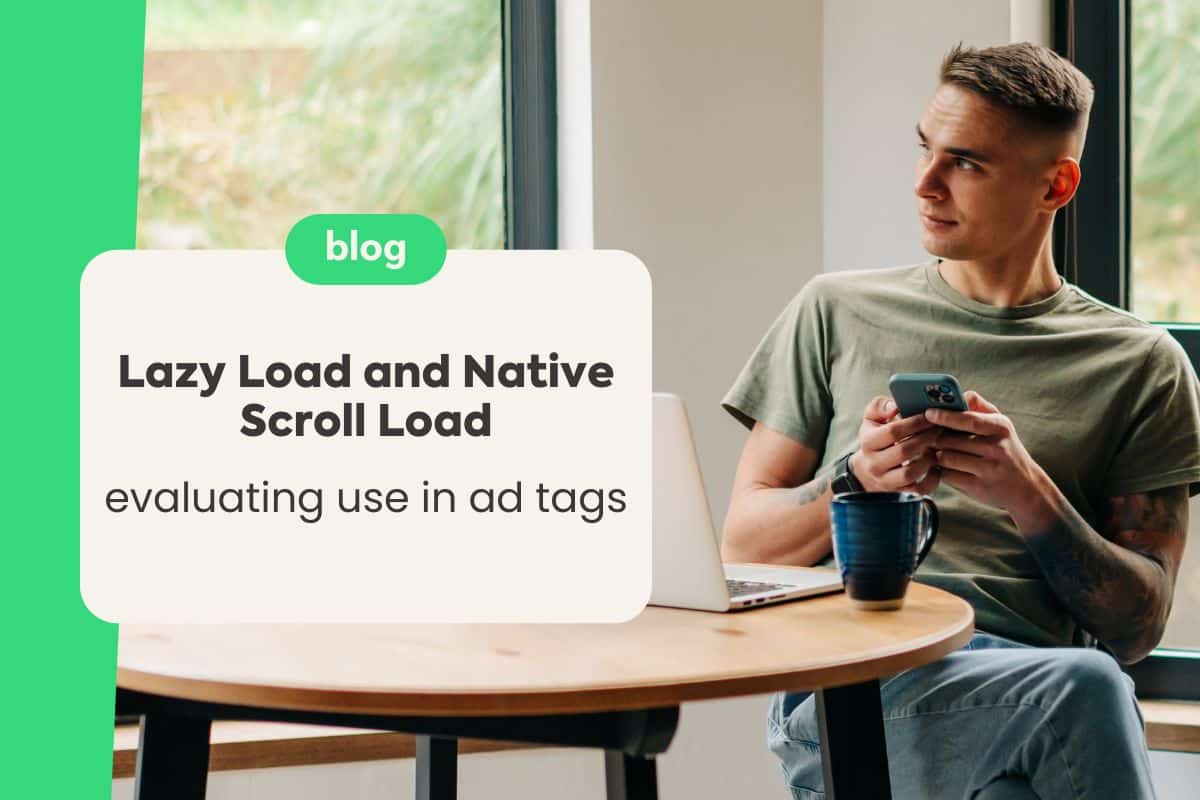In a digital scenario where every second counts, improving website performance and enriching the user experience (UX) are fundamental goals for publishers. The adoption of Native Lazy Load and Native Scroll Load emerges as effective strategies, promising to change the content and advertisement delivery paradigm. However, it’s vital to understand that not all circumstances equally benefit from these techniques.
Imagine a website that, besides loading quickly, provides smooth navigation, increasing user engagement. Lazy Load and Scroll Load can make this situation a reality, intelligently optimizing the loading of ads and content. Nevertheless, in certain cases, such as for urgent content or essential ads for monetization, their application may not be ideal. Grumft introduces a new approach, enhancing these techniques for ad tags and offering strategic guidance to maximize both the site’s performance and ad revenue, benefiting both users and advertisers.
Continue reading this article, where we detail the effective use of Lazy Load and Scroll Load in ad tags, when to avoid them, and how Grumft enhances the site’s monetization and performance.
Index
Direct Implementation in Ad Tags Code
Native Lazy Load in Ad Tags
Lazy Load, applied directly to ad tags, delays the loading of ads until they are about to enter the user’s viewport. This technique is particularly useful for ads located outside the initial view of the page, reducing initial loading time and improving the overall page speed.
Implementation:
- Use the loading=”lazy” property on ad tags to activate Native Lazy Load.
- For custom implementations, the IntersectionObserver can be used to detect the ad’s entry into the viewport and dynamically load the content.
Native Scroll Load in Ad Tags
On the other hand, Scroll Load loads additional ads as the user scrolls down the page. This is ideal for sites with extensive content or infinite feeds, where new ads can be loaded and presented efficiently without interrupting user navigation.
Implementation:
- Use scroll events to detect the user’s position on the page and load new ad tags as needed.
- This method requires a bit more customization, with scripts to monitor scrolling and insert ad tags at the appropriate time.
Important Considerations
- Performance and SEO: Ensure that Lazy Load and Scroll Load techniques do not negatively impact search engine performance. Make sure crawlers can access and index content properly.
- User Experience: Monitor user interaction with the ads. The goal is to improve UX without sacrificing impressions of relevant ads.
- Accessibility: Ensure that loading techniques do not compromise site accessibility, allowing all users equal access to content.
When Not to Use Native Lazy Load in Ad Tags
Content Above the Fold
- Impact on Visibility: Ads positioned above the fold are the first to be seen by the user when loading the page. Using Lazy Load on these ads can delay their display, affecting visibility and, potentially, revenue.
- Performance of Impressions: Above-the-fold ads have the highest click rates. Delaying their loading can reduce these interaction rates.
Ads with High Click Rates
Detriment to Monetization: Ads with a history of high click rates should not have their loading delayed, as this can reduce their impressions and negatively impact monetization.
When Not to Use Native Scroll Load in Ad Tags
Sites with Long-Form Content
User Disorientation: On sites offering long articles or step-by-step tutorials, loading new ads as the user scrolls can create a disorienting experience, negatively affecting reading and user retention.
Ads Critical to the Monetization Strategy
Impact on Revenue Strategy: If an ad is crucial to your monetization strategy, ensuring it is loaded and visible regardless of user interaction is essential. Scroll Load can delay the visibility of these essential ads.
Additional Considerations
Testing and Analysis
Before deciding against the use of Lazy Load or Scroll Load in certain situations, it is advisable to conduct A/B tests. These tests can provide concrete data on the impact of these techniques on user experience and revenue.
Balance Between UX and Revenue
The challenge lies in finding an optimal balance between user experience and maximizing revenue. Each site is unique, and what works for one may not be ideal for another. Closely monitoring performance and adjusting strategies as necessary is crucial.
Implementing Native Lazy Load and Native Scroll Load in ad tags should be done with consideration and care, avoiding situations where loading delays could harm the user experience or the effectiveness of monetization. Grumft’s solution, with its wide range of customizations for ad tags, allows publishers to maximize revenue intelligently while maintaining a high-quality user experience.
Grumft’s Customized Solution for Ad Tag Optimization
Grumft stands out in the digital monetization landscape by offering highly customizable ad tag solutions, adapting to the specific needs of each publisher. Recognizing that every site has its own set of challenges and objectives, Grumft positions itself as a strategic partner, not just providing technology but also expert advice and continuous support. This personalized approach allows for the strategic implementation of techniques like Native Lazy Load, Native Scroll Load, or neither, always considering the ideal balance between effective monetization and a positive user experience.
Sticky Tags with Guaranteed CPM and Dynamic Up Image Tags
Understanding the daily challenges faced by Monetization Directors and CTOs on large news platforms — from maintaining high eCPMs to engaging users and ensuring site security — Grumft responds with precise and innovative solutions. We offer sticky tags strategically placed at the top and bottom of pages, ensuring visibility and engagement, accompanied by a guaranteed CPM.
Furthermore, we introduce up image tags, designed to capture user attention and enrich the navigation experience. Together, these Async Adtags ensure faster loading and seamless integration, paving the way for robust monetization and exceptional user experiences.
For publishers seeking excellence and solutions that truly make a difference, Grumft emerges as the definitive option. By adopting our Async Adtags, including the sticky tags at the top and bottom with guaranteed CPM, as well as the innovative up image tags, you are not only elevating your site’s monetization to unprecedented levels of efficiency and profitability but also ensuring the maintenance of high quality in your users’ experience.
Grumft: A Strategic Monetization Partnership
Choosing the right loading technique for your site can mean the difference between a frustrating user experience and smooth, engaging navigation. Native Lazy Load and Scroll Load are powerful tools in any web developer’s arsenal, especially when complemented by Grumft’s customizable solutions. We encourage you to experiment with these techniques in your projects to maximize monetization efficiency and improve the user experience.
Remember, the key to success lies in efficiently balancing monetization and UX, and with the right strategies and solutions, like those offered by Grumft, this balance is entirely achievable.





